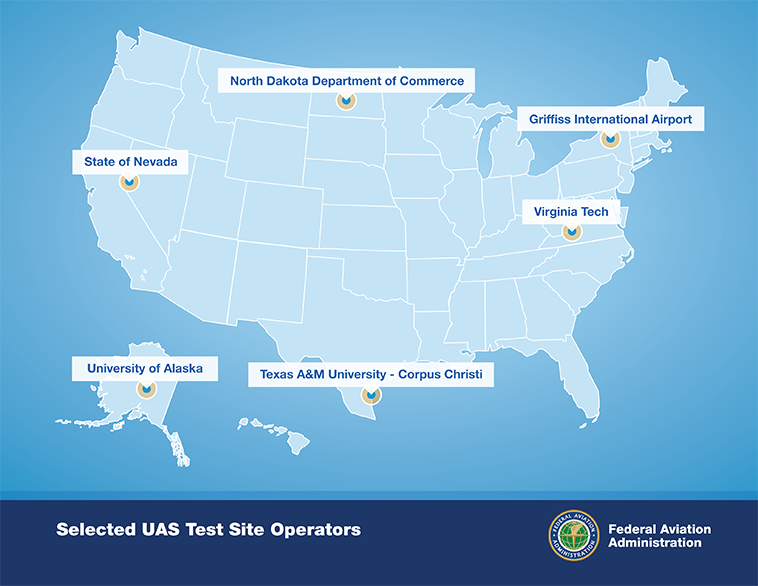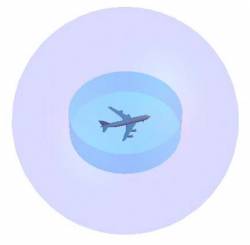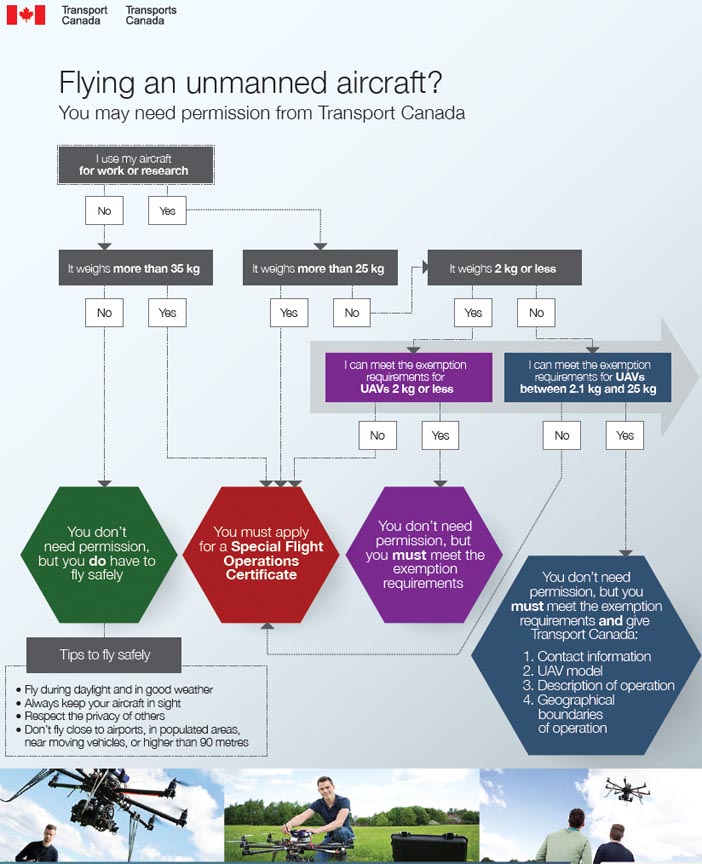A new rule that took effect yesterday (August 29, 2016) eases U.S. limits on the commercial drone flights, unleashing a surging industry that depends in large measure on GPS for success.
The rule’s provisions allow operators of unmanned aircraft systems (UAS) to proceed without having to obtain waivers or flight-by-flight permissions from the Federal Aviation Administration (FAA) — a process that had caused long delays and lost business.
A new rule that took effect yesterday (August 29, 2016) eases U.S. limits on the commercial drone flights, unleashing a surging industry that depends in large measure on GPS for success.
The rule’s provisions allow operators of unmanned aircraft systems (UAS) to proceed without having to obtain waivers or flight-by-flight permissions from the Federal Aviation Administration (FAA) — a process that had caused long delays and lost business.
Now, as long as operators follow the rule — called the Small UAS Rule or Part 107 — they are allowed to proceed. Their aircraft have to weigh 55 pounds or less (including payload) and they must stick to sparsely populated areas and altitudes of 400 feet or lower as they do things like inspect wind turbines or track cargo
"Industry estimates that over the next 10 years, commercial unmanned aircraft systems could generate more than $82 billion for the U.S. economy and by 2025 could be supporting as many as 100,000 new jobs," Secretary or Transportation Anthony Foxx told reporters during a Monday press conference.
Only daylight flights are allowed under Part 107 though it is possible to get a waiver for broader operations. In fact 76 waivers were issued on August 29 and at least 11 more are in the works.
Such waivers are the basis for expanding beyond-line-of-sight (BLOS) operations, one of the keys to making drones practical for inspecting infrastructure like power lines and railroad tracks. BLOS is also widely seen as essential to cost-effective agricultural imaging and mapping — an application that lowers the cost of manned-aircraft imaging, improves image availability and can be used in conjunction with precision agriculture.
Even without BLOS, though, the potential of the commercial drone industry is tremendous
"The FAA forecasts there could be as many as 600,000 unmanned aircraft used commercially during the first year after this rule is in place," FAA Administrator Michael Huerta told reporters.
Just a Beginning
That, however, may be understating the potential of the UAS industry as a market for GPS receivers,
As the number of waivers soared and it became clear that the Part 107 rule was near finalization, interest in UAS swelled well beyond the arena of professional operators. Some 1.15 million drones were sold in the United States in 2015, with sales surging to 2.4 million drones in the first half of this year, according to the Consumer Technology Association’s (CTA) report U.S. Consumer Technology Sales and Forecasts.
Although hobbyist drones and those flying under Part 107 are not required to have GPS receivers, many of them do. After a drone crashed on the White House lawn manufacturers began incorporating geofencing to keep drones out of restricted airspace. Moreover, an increasing number of professional UAS now use automated flight planning that relies on GPS and waypoints.
"Just about anything (any drone) that’s over a couple of hundred bucks is going to use GPS in one way, shape or form," said retired Maj. Gen. James Poss, the CEO of ISR Ideas and the former executive director of the ASSURE FAA UAS Center of Excellence Team. "And obviously any of the larger drones that have ADS-B will have GPS as well."
The FAA is already working on new rules and standards for those larger UAS and for beyond-line-of-sight operations. Huerta said he also anticipated releasing a rule for UAS flight over people by the end of the year.
It is not yet clear if operating over long distances with a small UAS will mean having to incorporate a certified aviation receiver. The debate on the subject could reach beyond the usual issues of cost and weight to a signal interference debate largely unfamiliar to those in the UAS industry.
Ligado Networks, Again
A Virginia-based firm called Ligado Networks is proposing to build a high powered wireless broadband network using frequencies neighboring those used by GPS. Ligado is the successor to LightSquared, which was reconstituted with new owners and a new name after emerging from bankruptcy late last year. LightSquared was forced to file bankruptcy after tests proved that signals from their broadband network would overwhelm GPS receivers. Although the original network plan has been modified leaders in the GPS community remain convinced it still poses an interference threat.
On August 15 a group of aviation and aerospace industry representatives led by Aviation Spectrum Resources, Inc. (ASRI) met with Philip Verveer, senior counselor to Federall Communications Commission (FCC) Chairman Tom Wheeler. They discussed Ligado’s potential interference to the GPS receivers on which aviation depends. They also noted, according to an August 17 Ex Parte letter in FCC Docket 11-109, "the swiftly emerging unmanned aircraft systems (“UAS”) market which will bring to the nation’s airspace hundreds of thousands of new aircraft small and large — in the near future that will depend on GPS for safe, efficient operations."
The group pointed out that the 600,000 commercial UAS the FAA anticipates to be deployed in the United States this year is expected to grow to more than 2.7 million by 2020.
In a response to the ASRI group posted August 23, Ligado pledged to work actively with the FAA and to manage its system such that its proposed service did not interfere with certified aviation GPS receivers operating under existing and future FAA Minimum Operational Performance Standards.
They made it clear, however, that their efforts would not extend to noncertified receivers.
"One area where we may differ with the aviation community is that in their recent Commission meetings various aviation parties have raised questions regarding issues outside the context of certified aviation GPS receivers," they wrote.
"Uncertified equipment, including uncertified GPS units, should not be installed on aircraft with standard airworthiness certificates," they argued out in a footnote. "Uncertified GPS units do not meet the equipment requirements associated with the mandate and do not qualify for ATC [air traffic control] services using ADS-B data."
With UAS entering the skies, however, the complexion of the debate over aviation GPS receivers is likely to change. Given the limited risk they pose, small UAS aircraft have not been required to get airworthiness certificates, and any change to that approach would likely be met with stiff opposition. Proposals have also arisen for unmanned aircraft, at least in some circumstances, to be allowed to use ADS-B.
Ligado is pushing the FCC for a quick decision so that it can join the standards-setting process for 5G wireless. Given the timetable the FAA is on for UAS, the risk to manned aviation from interference to drone navigation, and the very early nature of the BLOS research, it is not clear how the matter can be resolved quickly enough for that.






